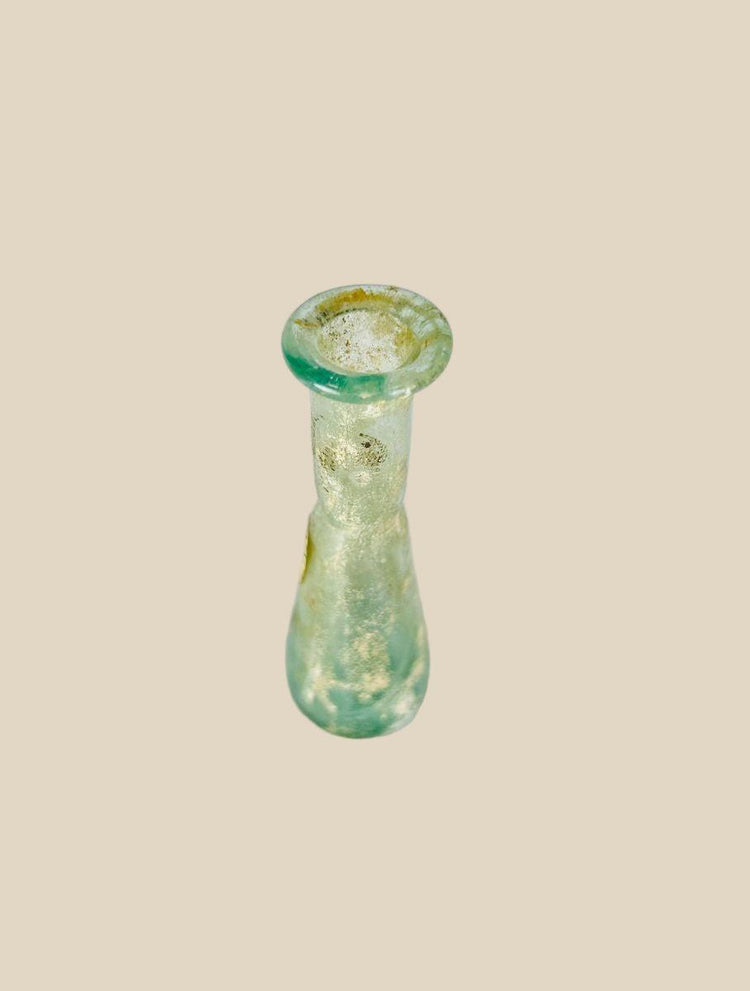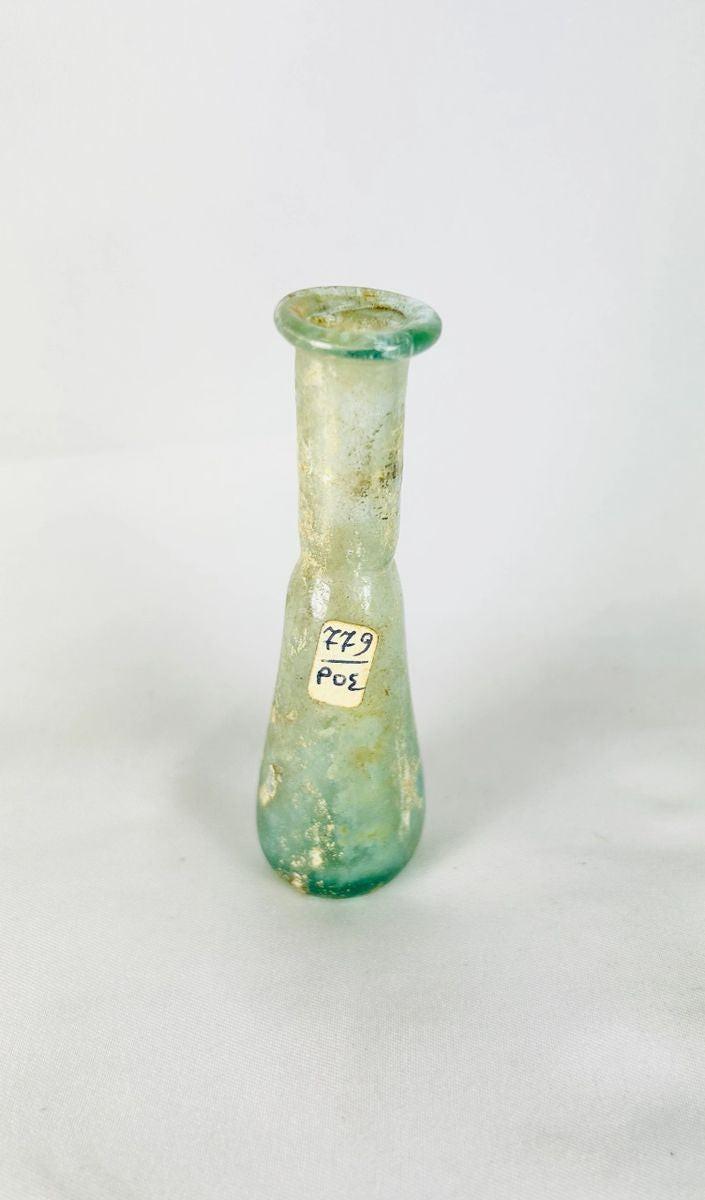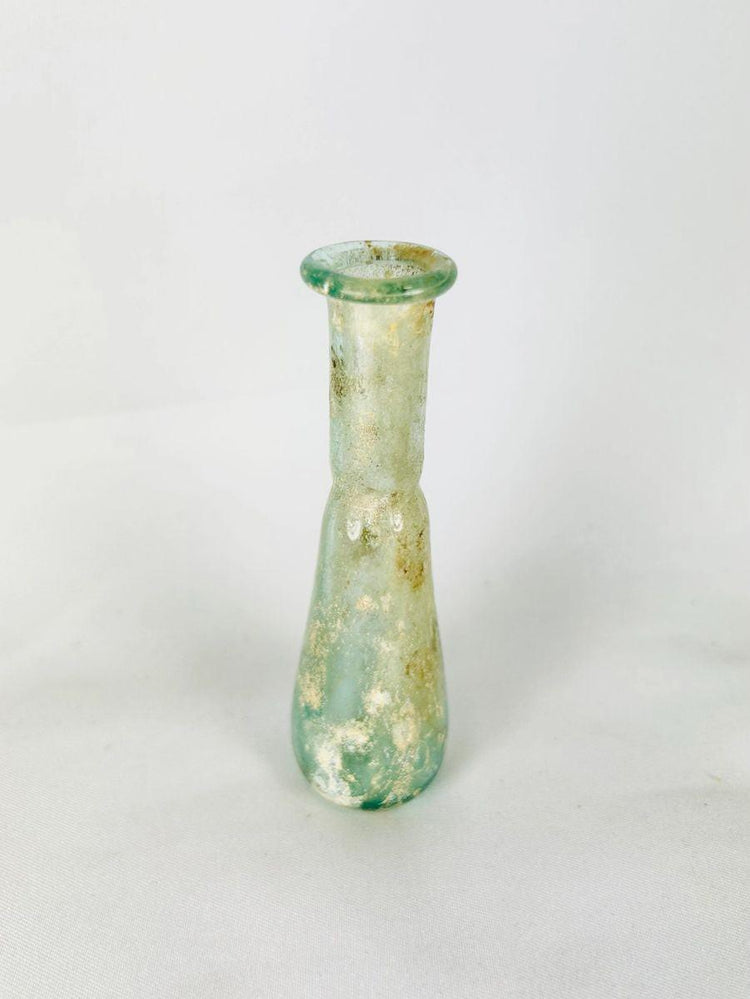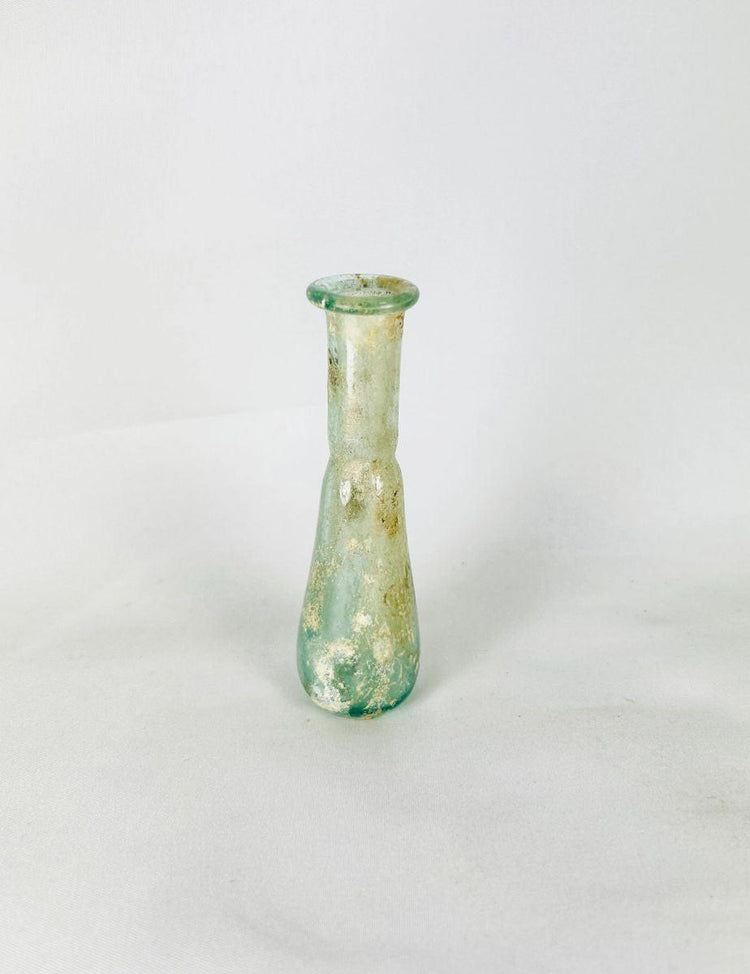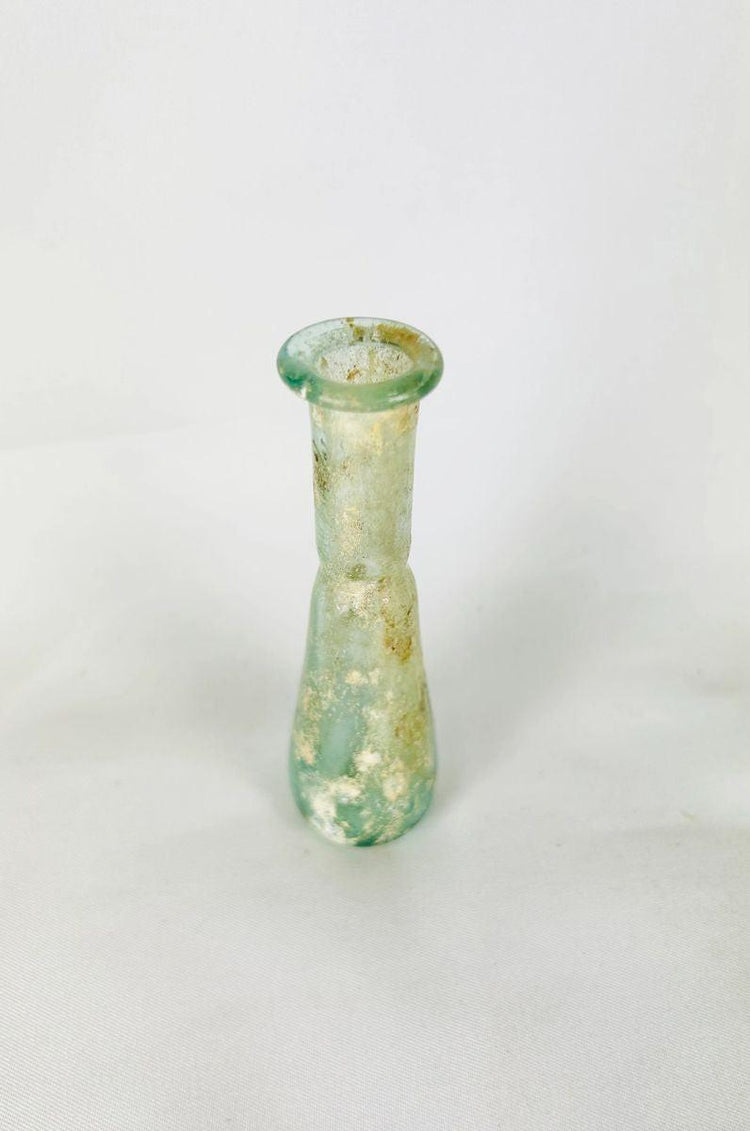Antique Roman Glass Vessel | Hand-Blown Perfume or Cosmetic Container | 1st–4th Century CE
Description
More
Less
Historical Context & Origin
Region: Roman Empire
Material: Blown glass
Period: 1st Century BCE – 4th Century CE
Description
This finely preserved Roman glass bottle was hand-blown during the height of Roman glassmaking innovation. Likely used to hold ointments, perfumes, medicines, or cosmetics, it features an elongated cylindrical neck tapering into a rounded conical body, with a small, out-sprayed flat rim folded inward for strength and controlled pouring. The delicate translucency, natural imperfections, and presence of its original archaeological tag highlight its authenticity and ancient provenance.
Features
- Elongated cylindrical neck with rounded conical body
- Out-sprayed folded rim for reinforcement and pouring
- Hand-blown with natural bubbles and imperfections
- Original archaeological tag and number confirming provenance
Cultural Significance
Unguentaria such as this were essential in Roman daily life, reflecting the importance of personal hygiene, luxury, and trade. Roman glassmaking was revolutionary, replacing metal and ceramic vessels with lightweight, functional, and elegant glass. These small bottles circulated widely throughout the empire, serving as both practical containers and markers of wealth and refinement.
Condition
Excellent condition for its age, with a delicate surface sheen and minor wear consistent with burial and handling. Archaeological numbering intact.
Dimensions (approximate)
Height: 4 in
Age
1st Century BCE – 4th Century CE
Learn More
Discover How Ancient Romans Mastered the Art of Glassmaking
Explore More Historical Glass Masterpieces in Our Collection
Description
Historical Context & Origin
Region: Roman Empire
Material: Blown glass
Period: 1st Century BCE – 4th Century CE
Description
This finely preserved Roman glass bottle was hand-blown during the height of Roman glassmaking innovation. Likely used to hold ointments, perfumes, medicines, or cosmetics, it features an elongated cylindrical neck tapering into a rounded conical body, with a small, out-sprayed flat rim folded inward for strength and controlled pouring. The delicate translucency, natural imperfections, and presence of its original archaeological tag highlight its authenticity and ancient provenance.
Features
- Elongated cylindrical neck with rounded conical body
- Out-sprayed folded rim for reinforcement and pouring
- Hand-blown with natural bubbles and imperfections
- Original archaeological tag and number confirming provenance
Cultural Significance
Unguentaria such as this were essential in Roman daily life, reflecting the importance of personal hygiene, luxury, and trade. Roman glassmaking was revolutionary, replacing metal and ceramic vessels with lightweight, functional, and elegant glass. These small bottles circulated widely throughout the empire, serving as both practical containers and markers of wealth and refinement.
Condition
Excellent condition for its age, with a delicate surface sheen and minor wear consistent with burial and handling. Archaeological numbering intact.
Dimensions (approximate)
Height: 4 in
Age
1st Century BCE – 4th Century CE
Learn More
Discover How Ancient Romans Mastered the Art of Glassmaking
Explore More Historical Glass Masterpieces in Our Collection
You May Also Like


















